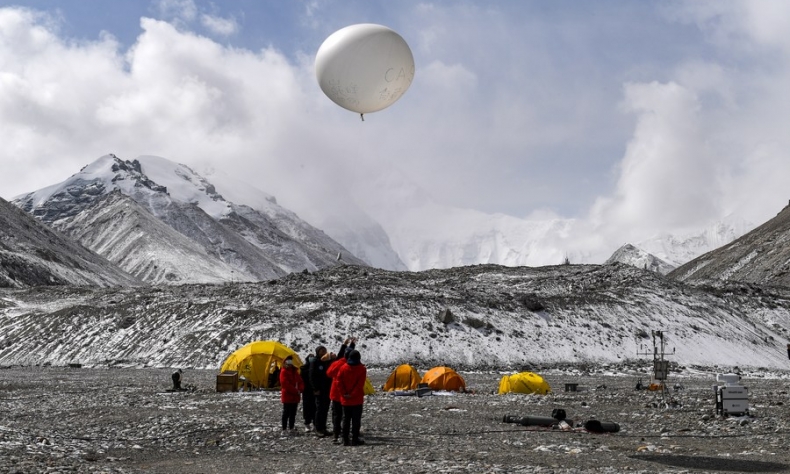Stepped-Up Climate Cooperation to Protect World’s Highest Mountain

Beijing has kept all its promises and is well-positioned to meet its climate commitments and transition to a greener economy while meeting its development goals.
Mount Qomolangma (Everest), or Sagarmatha in Nepali, located in the Himalayas, is the highest peak in the world. It links China and Nepal in a multi-dimensional manner. May 29 this year marked the 70th anniversary of the first successful human climb of it.
Thought to be some 60 million years old, the majestic peak capped by ceaseless snow and its mesmerizing magnificence has long been attracting mountaineers, researchers, scientists, and tourists from around the world. However, there is growing concern about temperatures rising, glaciers and snow melting, and weather getting harsh and unpredictable on the world’s tallest mountain.
Indeed, climate change is taking its toll in a remorseless manner, and Mount Qomolangma, along with many other mountains around the world, is facing an existential threat.
According to experts, temperatures in the Himalayan region are rising faster than the global average level, leaving the snow and ice, as well as glaciers melting fast and lakes drying up. A new study has found that Qomolangma’s glaciers have lost 2,000 years of ice in just the past 30 years.
The deteriorating climate conditions are hitting not only the animals’ habitats but having negative impacts on the people whose livelihoods depend on the health of mountainous areas. For example, rivers that originate in the Himalayas provide water resources to around 2 billion people, roughly a quarter of the world’s population. Moreover, tourism in the region also faces challenges as climate change brings more frequent natural disasters, such as landslides, glacial lake outbursts, and avalanches.
Given this, countries and people need to step up their efforts to combat and respond to the effects of climate change.
Nepal is one of the most climate change-affected countries in the world and already suffers from funding gaps to mitigate the impact of climate change. Globally, Nepal is ranked fourth in terms of vulnerability to climate change. This global problem poses a significant threat to China as well.
Technological progress in recent years has enabled countries to fix the knowledge gap to reduce global warming and to protect biodiversity and the ecosystem of the Himalayas in a comprehensive manner.

In 2022, Chinese scientists set up the world’s highest automated weather station on Qomolangma, which records temperatures, humidity, wind speeds, and other key data for climate change-related studies. Thanks to these technological enhancements, it will be easier to predict stronger or more frequent weather extremes that likely occur under climate change, such as more intense downpours, avalanches, stronger hurricane winds, and glacial lake bursts, helping to better protect people living downstream from the consequences of such calamities. Thus, improved weather prediction is vital to giving communities more time to save lives and minimize damage to infrastructure.
In 2019, China expressed its commitment to making its investments “green and clean” under the framework of the Belt and Road Initiative (BRI), aiming to reduce emissions and protect biodiversity as well as provide improved economic opportunities for the countries involved in the BRI programs. As such, Sino-Nepal green cooperation, with an aim of saving mountains, is an important part of such projects.
Beijing has kept all its promises and is well-positioned to meet its climate commitments and transition to a greener economy while meeting its development goals. Nepal could expect to benefit from the Chinese promise to help deliver low-carbon technologies to the least developed countries within the BRI framework as there is an immediate need for Nepal to ensure a green development strategy amidst the backdrop of increasing climate vulnerability.
Mount Qomolangma is called the “China-Nepal Friendship Peak,” serving as an eternal symbol of this bilateral bond. Closer Sino-Nepal cooperation on green development is expected to better protect “the roof of the world.” If we, humanity, do not fail nature, nature will not fail us.
Saroj Gautam is a journalist from Nepal. He is pursuing his Ph.D. in international relations at the China Foreign Affairs University in Beijing.
 Facebook
Facebook
 Twitter
Twitter
 Linkedin
Linkedin
 Google +
Google +










